The Intricacies of Rubik's Cube Competitions

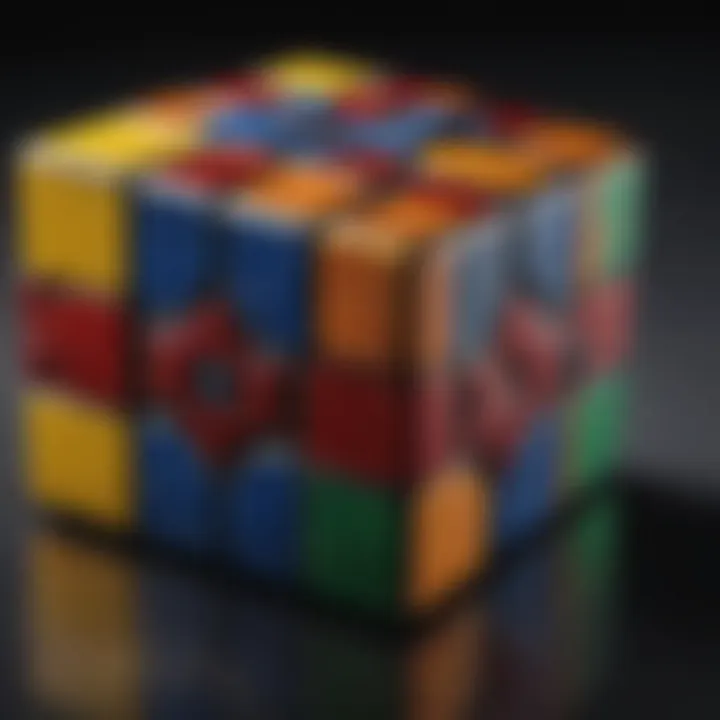
Intro
Rubik's Cube competitions have transcended from mere recreational activities to a serious sport marked by rigorous skills and passion. These events bring together enthusiasts from around the globe and create an environment where both novice and expert cubers showcase their abilities. Understanding the structure, culture, and psychological aspects involved in these competitions is vital for anyone interested in the world of cubing.
Competitors often demonstrate not only speed but also dexterity and strategic thinking. The intricacies of these competitions involve a combination of techniques, the right gear, and a supportive community.
Techniques and Tips
In the realm of Rubik's Cube competitions, mastering specific techniques can significantly enhance performance. Below are key areas to focus on:
Skill Development
Skill development is crucial for competitors. Regular practice sessions and participation in local competitions allow cubers to refine their skills. Practicing various methods, such as the Fridrich method or beginner's method, helps improve efficiency in solving the cube. Setting measurable goals can also help track progress and maintain motivation.
Practical Techniques
Different techniques can be employed to achieve faster solve times. Among these, the following are especially effective:
- Finger Tricks: Learning finger tricks can reduce the time required for transitions between moves.
- Lookahead: This involves predicting upcoming moves while executing current ones, which minimizes pauses and boosts speed.
- Algorithm Mastery: Familiarity with common algorithms can greatly enhance efficiency and execution during a competition.
Common Mistakes to Avoid
- Overlooking Practice: Neglecting regular practice can hinder improvement. Competitors should set aside time each week for focused practice.
- Ignoring Inspection Time: Properly utilizing inspection time is vital for strategizing before the solve begins.
- Neglecting Mental Preparation: Mental readiness can impact performance. Competitors should engage in relaxation techniques and positive visualization to improve focus during the competition.
Gear and Equipment
The right gear can significantly influence a cuber's performance. As technology in cubing advances, equipping oneself with the best tools is paramount.
Essential Gear for Beginners
For those just diving into competitive cubing, essential gear includes:
- A standard 3x3 Rubik's Cube, preferably speed cubes like the Gan 356 or Moyu RS3.
- A timer for keeping track of solving times such as the Stackmat timer.
- A carrying case for easy transport to competitions.
Latest Innovations and Trends
Recent advancements in cubing technology include the incorporation of magnetic mechanisms in cubes. This feature enhances stability and aids quick turns, which is particularly favored by speed cubers. Brands like QiYi and Valk are pioneering in creating innovative models that cater to competitive needs.
Reviews and Comparisons
Before purchasing gear, reading reviews can offer valuable insight. Websites like Reddit and Facebook groups are excellent forums for obtaining genuine feedback from fellow enthusiasts. Compare various models based on features such as speed, corner cutting, and price to make an informed decision.
Community and Culture
The community surrounding Rubik's Cube competitions fosters camaraderie. Participating in local and international events creates bonds through shared interests. It is not uncommon to find friendships formed from competition experiences. Online platforms, including reddit.com and facebook.com, serve as crucial tools for connecting with other enthusiasts, sharing tips, and discussing competition results.
"The Rubik's Cube competition isn't just about solving cubes; it's about the people and the passion that ignites this sport."
Finale
Engaging in Rubik's Cube competitions provides insights not only into the mechanics of solving the cube but also into the rich community tied to it. As the sport continues to evolve, both new and seasoned cubers will find opportunities to grow their skills and foster connections with like-minded individuals. Embracing the intricacies of these competitions is also a step towards not just personal development but an appreciation for this unique culture.
Understanding Rubik's Cube Competitions
Rubik's Cube competitions have emerged as a unique expression of skill, strategy, and community. Understanding this topic is essential, as it highlights the nuances of competitive cubing, which transcends mere hobby into serious athletic pursuit. Competitions serve as a platform for enthusiasts to showcase their talent, sharpen their skills, and build friendships with like-minded individuals. The structure of these events typically includes various types of contests, each with its own set of rules and formats that cater to different levels of expertise and competition.
The importance of understanding Rubik's Cube competitions also lies in the benefits they offer both individual competitors and the broader cubing community. For competitors, participating in official events can lead to personal growth, improved problem-solving abilities, and increased focus. These competitions foster an environment of camaraderie and mutual support among participants. Moreover, they provide opportunities for recognition and achievement, contributing to the overall sense of accomplishment and pride within the cubing community.
The History and Evolution of Cube Competitions
The journey of Rubik's Cube competitions began shortly after the cube became a global sensation in the 1980s. Since the first official competitions held in Budapest in 1982, the evolution of these events reflects the growing popularity of cubing. Over the decades, advances in both cubing technology and competition formats have contributed to the increase in participants. Today, events are hosted worldwide, attracting competitors of all ages.
As the community grew, so did avenues for organizational structures. The World Cube Association, established in 2004, set standards for competitions, ensuring fair play and uniformity across events. This organization plays a significant role in furthering the legitimacy and popularity of competitions.
Types of Competitions
Competitors face various types of opportunities to test their skills, each with distinct characteristics and appeal.
Online vs. In-Person Events
Online and in-person competitions each have unique features that cater to diverse audiences. Online events have gained popularity due to their accessibility. They allow competitors to participate from the comfort of their homes, often making participation feasible for those who may not have access to live competitions. A key characteristic is the flexibility in scheduling, which accommodates participants around the globe. However, these events may lack the dynamic atmosphere of in-person gatherings.
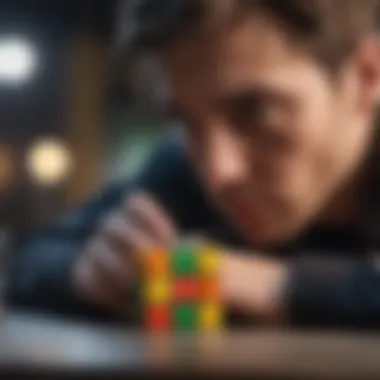
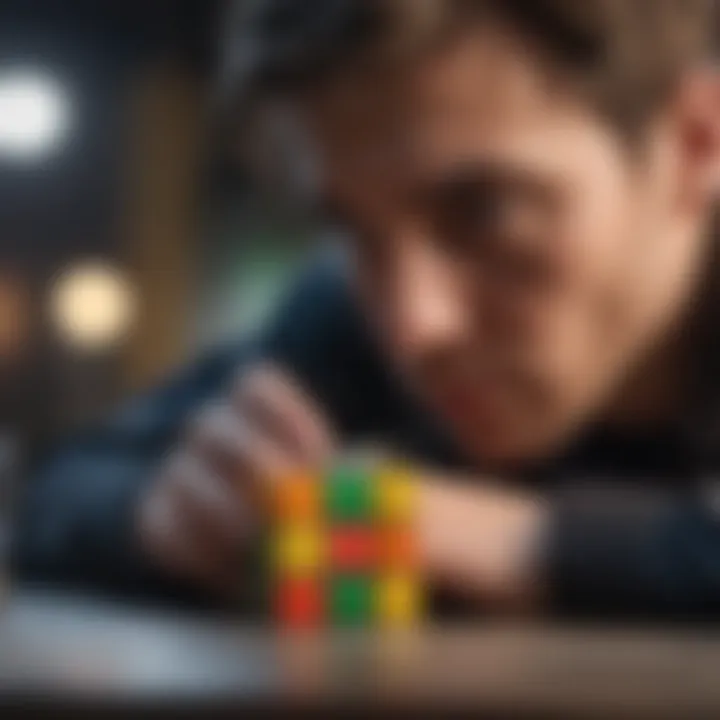
In-person events, on the other hand, create an electric environment that enhances the competitive spirit. They allow for direct interaction among participants, fostering community and collaboration. The tangible excitement of a live audience can stimulate competitors to perform at their best. Yet, attending these events often requires travel and can be cost-prohibitive for some individuals.
National Championships
National Championships often serve as pinnacle events for competitors within country borders. They uphold both prestige and recognized status among competitors. Such championships provide an opportunity for participants to gain visibility and earn the chance to represent their nation at international events. The well-defined structure of these competitions allows for fair play and adherence to official guidelines.
However, the competitive nature can sometimes create stress for participants. While striving for national titles, competitors may experience pressure that could impact their performance. Nonetheless, the thrill of competing at such an esteemed level is a strong motivator for many cubers.
World Championships
The World Championships represent the highest echelon of Rubik's Cube competition. These prestigious events attract the best cubers from around the globe, showcasing exceptional talent and diverse solving techniques. A distinctive feature of World Championships is the wide variety of events covered, including new cube types and solving methods that may not be present in local events.
With thousands of competitors, the World Championships offer a unique opportunity for participants to network with fellow enthusiasts and to learn from top performers. The intense competition can be challenging but is also highly rewarding, as competitors strive to leave their mark on the global stage.
The significance of these competitions cannot be understated; they are critical in driving the future of the sport.
Rules and Regulations
Understanding the rules and regulations of Rubik's Cube competitions is crucial for both participants and organizers. These guidelines ensure a level playing field, promote fair competition, and ultimately contribute to the credibility of the sport. By adhering to established protocols, competitors can focus on their performance without concerns of bias or unfair advantages. Thus, awareness of these rules is paramount, as violations can lead to disqualification or penalties that may affect the integrity of the results.
General Competition Rules
General competition rules serve as the foundation of every Rubik's Cube event. These regulations help maintain order and clarity throughout the competition. Some key aspects include:
- Competitor Identification: All participants must be registered, and they should display their identification clearly. This helps organizers verify identities and age categories.
- Cube Specifications: Competitors must use compliant cubes, which meet the specific standards set by the World Cube Association. This ensures that all cubers have access to similar equipment, minimizing advantages.
- Timekeeping: Accurate timekeeping devices must be in place. The use of specific software or electronic timers is mandatory to prevent discrepancies in timing.
Understanding these general rules not only prepares competitors for the event but also establishes a transparent framework for everyone involved.
Specific Event Guidelines
Specific event guidelines delve deeper into the structure of competitions, addressing nuances that can impact a competitor's strategy and performance.
Single Solve vs. Average Solve
The Single Solve and Average Solve formats represent different methods for determining a competitor's score. In a Single Solve, the objective is to achieve the fastest time in one specific attempt. This format often leads to thrilling moments, as the pressure mounts during the actual solve. It is particularly popular for its straightforward nature, allowing cubers to focus on a singular performance without worrying about averages.
Conversely, the Average Solve involves taking the average of multiple attempts, typically five. This method tends to reduce the influence of a particularly bad or exceptional solve, providing a more balanced assessment of a cuber's overall ability. It can be beneficial for competitors who may have inconsistent solve times, allowing them to showcase their average talent over time.
Each format has its unique characteristics and caters to different skills within the community, making it essential for competitors to adapt their strategies accordingly.
Time Limits and Penalties
Time limits and penalties play a critical role in maintaining competition integrity. Competitors are typically given a set time to complete each solve. If they exceed this time limit, penalties can apply, impacting their final scores.
The time limits ensure that competitions progress smoothly. They prevent delays and keep the event on schedule, which is essential in larger competitions where multiple competitors are present.
Penalties may also be enforced for infractions such as incorrect cube handling or failure to follow solving procedures. These measures are designed to keep players accountable, ensuring that everyone plays by the same set of rules. On the other hand, excessive penalties could be discouraging for new competitors, potentially affecting their engagement with the competitive environment.
Preparation for Competitions
Preparation for Rubik's Cube competitions is a crucial aspect that can significantly influence a competitor's performance. It encompasses a wide range of practices and techniques that help individuals sharpen their skills and mentally prepare for the intensity of the event. Not only does effective preparation boost one’s solving speed, but it also fosters a sense of confidence and readiness that can make a difference during competitions.
Training Practices for Competitive Success
Daily Practice Routines
Daily practice routines form the backbone of a serious cuber's preparation. Consistency in practice is key, allowing a competitor to familiarize themselves with solving methods and build muscle memory. A common characteristic of these routines is their structure, ensuring that cubers focus on both speed and accuracy.
One unique feature of daily practice is the incorporation of diverse solving techniques, such as cross-solving, F2L (First Two Layers), and OLL (Orientation of the Last Layer). This variety allows competitors to identify their strengths and weaknesses. Daily routines are often popular because they can be customized to fit individual schedules. It is essential, however, not to overburden oneself, as fatigue can lead to burnout.
Strategy Development
In conjunction with practice, strategy development is equally important. This involves planning how to approach the cube for maximum efficiency. A key aspect of strategy development is the analysis of one’s own solving patterns and times to identify areas for improvement.
Strategic thinking is essential. Competitors who actively develop strategies often find themselves better equipped to handle pressure during competitions. This aspect makes strategy development a popular choice among experienced cubers. However, it can also lead to overthinking, which may hinder performance under time constraints.
Mental Preparation Techniques
Visualization Strategies
Visualization strategies play an integral role in mental preparation. They involve mentally simulating the entire process of solving the cube before the actual event. The primary characteristic of these strategies is their ability to create a mental 'blueprint' of the solving process, which can increase familiarity and reduce anxiety.
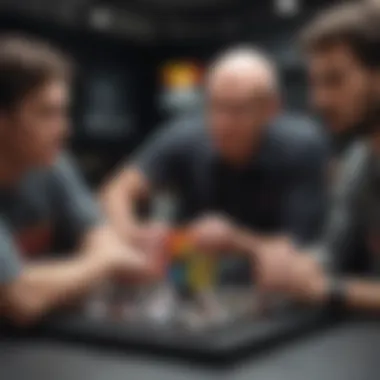
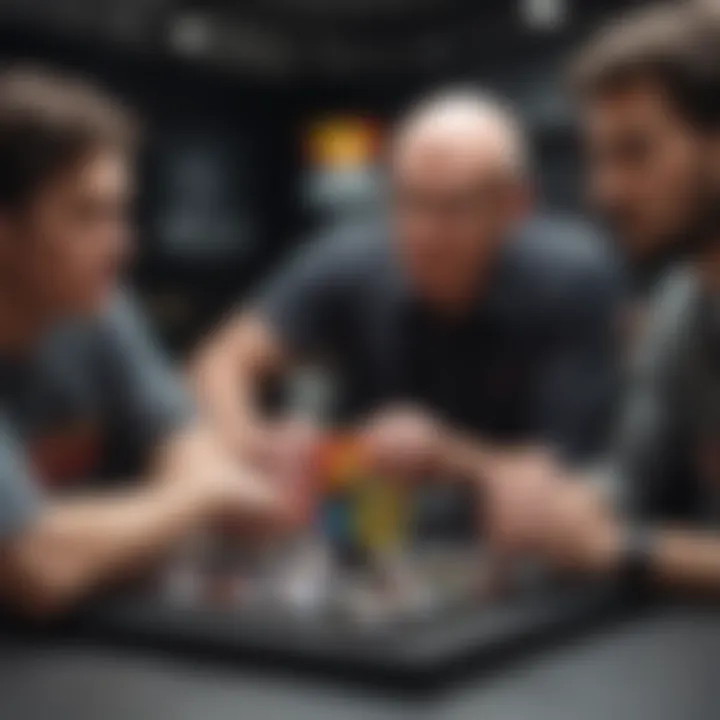
The unique feature of visualization strategies is their versatility. They can be adapted to suit different solving methods and even specific cube types. This adaptability is beneficial as it allows competitors to visualize solutions tailored to their style. However, one potential disadvantage is that excessive reliance on visualization can lead to a lack of practical application if mental imagery does not translate well in real-time situations.
Stress Management
Lastly, stress management techniques are vital in ensuring optimal performance at Rubik’s Cube competitions. They encompass various methods aimed at reducing anxiety and enhancing focus during the event. A notable characteristic of stress management practices is their focus on breathing and mindfulness techniques.
These techniques, when practiced regularly, can enhance emotional control and prevent panic in high-stakes situations. A unique advantage is that they are widely applicable, not just in cubing but in many performance-oriented activities. However, individuals may find that some methods do not resonate well with them, necessitating the need for personalized approaches to stress management.
Effective preparation combines consistent practice, strategic development, visualization, and stress management to create a well-rounded competitor ready for any challenge.
The Role of Technology in Cubing
Technology plays a crucial role in the realm of Rubik's Cube competitions. It significantly enhances the experience of both competitors and spectators. With the ongoing advancements, cubers can improve their skills through better training aids, tools, and community connections. The emphasis on technology also reflects the evolving nature of the competitions, making them more accessible and relevant in today’s digital age.
Advancements in Cube Design
Magnetic Cubes
Magnetic cubes have transformed the way cubers approach solving the puzzle. This type of cube incorporates small magnets within its mechanics. The primary advantage of magnetic cubes is their ability to align the pieces more accurately, providing a smoother solving experience. Many competitors prefer them as they tend to help in reducing the reliance on manual adjustments during fast solves. The increased stability during turns can lead to better performances in competitions.
However, there are considerations with magnetic cubes. They might be heavier than traditional cubes and can be limited in customization. Nonetheless, their benefits often make them a popular choice among serious competitors.
Customizable Designs
Customizable designs allow cubers to tailor their cubes to their preferences. This aspect is essential in competitive settings where comfort and performance can drastically change outcomes. Significant features include adjustable tension settings, different sticker options, and even personalized weights for stability.
The key characteristic of these designs is versatility. Customizable cubes enable competitors to configure their equipment for optimal performance. However, this personalization may come at a higher cost. Some cubers may feel overwhelmed with choices, leading to decision fatigue.
Timing Devices and Software
Types of Timing Systems
Timing systems are essential for competitions, offering precise measurements of solve times. Various systems, such as handheld timers and sensor-based mats, have emerged to enhance accuracy. The key feature is that they minimize human error during timing, leading to more reliable results in competitions.
Popular choices for timing devices include the Stackmat timer, which many cubers trust for its reliability. However, these systems usually depend on batteries, which can be a downside in prolonged events. Nevertheless, they play a significant role in the competitive environment.
Software for Tracking Progress
Software tools for tracking progress help cubers monitor their skills over time. Programs such as CubeTimer allow users to log their practice solves and analyze trends in their performance. This capacity for analysis makes these tools vital for competitors striving for improvement.
These software applications can be accessed easily, and many have community features, allowing interaction with other cubers. However, issues like data privacy may arise, and some may be deterred by a learning curve associated with using new tech. Regardless, these tracking solutions markedly elevate the training experience.
Community and Culture
The community and culture surrounding Rubik's Cube competitions form the backbone of this intricate world. This aspect influences not only the competitive environment but also the motivations and relationships among cubers. A strong community provides a sense of belonging and fosters engagement, leading to shared knowledge and better skills among peers. Moreover, the culture of collaboration and communication encourages enthusiasts to hone their abilities while appreciating the diverse backgrounds of fellow competitors.
The Global Cubing Community
Online Forums and Social Media
Online forums and social media platforms play a vital role in the global cubing community. Websites like Reddit and Facebook serve as central hubs for cubers to gather, share insights, and discuss trends. These platforms exhibit a rapid exchange of information, which is essential. The immediate accessibility of resources and tutorials allows members to improve their techniques and solve strategies.
A unique feature of online interaction is the ability to connect with a global audience, yet it also comes with potential drawbacks. Miscommunication can occur, and not all advice is equally valid. Therefore, while these online communities are advantageous for quick access to information, they require discernment in evaluating the quality of content.
Local Cubing Groups
Local cubing groups represent another crucial component of the community. These groups provide face-to-face interactions, which can foster deeper connections among members. Many cubers find that meeting in person offers a level of motivation that online platforms cannot replicate. The camaraderie developed through shared experiences can enhance learning.
One unique aspect of local groups is the ability to practice together. This collaborative practice can lead to direct feedback, which is often more beneficial than online advice. However, the downside might be limited resources compared to the vast information available online. Overall, local cubing groups contribute significantly to personal growth and community building among enthusiasts.
The Culture of Collaboration
Sharing Techniques
Sharing techniques is vital in the cubing culture. Cubers often discuss strategies for improving their solve times or mastering complex algorithms. The open exchange of knowledge allows less experienced cubers to learn from experts, leading to a healthier competitive environment. This culture encourages innovation and adaptation of new methods.
The main advantage of sharing techniques lies in fostering a collaborative rather than a competitive ethos. However, there can be instances where proprietary methods lead to disputes between cubers. Awareness of intellectual property and respect for originality are essential to maintain a supportive climate.
Mentorship and Sponsorship
Mentorship and sponsorship play a crucial role in shaping the futures of many cubers. Experienced competitors often guide newcomers, offering invaluable insights and support as they navigate the complexities of the sport. This mentorship can significantly shorten the learning curve for beginners, making it a popular choice for those looking to improve.


Sponsorships also arise from this collaborative spirit. As talented cubers gain recognition, brands may offer them sponsorship opportunities. This connection benefits both parties, as sponsors gain visibility in the community while competitors receive support for their endeavors. However, reliance on sponsorships can sometimes lead to pressure, which may detract from the joy of cubing. Finding a balance is essential for maintaining the original passion for the sport.
The Psychological Aspects of Competition
Psychology plays a crucial role in Rubik's Cube competitions. Competitors often face immense pressure to perform well. Understanding the mind's impact on speedcubing is essential for developing effective strategies and achieving success. Psychological preparation can create a competitive edge, influencing both performance and enjoyment in these events.
Focus and Concentration Techniques
Focusing one’s mind is necessary in a Rubik's Cube event. Competitors must eliminate distractions to solve the cube effectively. Techniques such as mindfulness and breathing exercises can help develop concentration. For example, taking a moment to breathe deeply before starting a solve can enhance clarity and concentration.
Moreover, competitors frequently use visualization techniques. They imagine completing the solve quickly and successfully. This practice builds confidence and reinforces the muscle memory required for each maneuver. The capacity to maintain focus often separates the best cubers from the rest.
The Impact of Pressure on Performance
Pressure is an inherent part of competitions. It can either motivate a competitor or lead to mistakes. Understanding how to manage this pressure is vital for optimal performance.
Coping Strategies
Coping strategies are methods used to deal with stress and anxiety. Many speedcubers implement various coping strategies to handle the pressures of competition. One key feature of these strategies is their flexible nature. Techniques may vary from person to person. For example, some may find solace in deep breathing exercises, while others might rely on positive self-talk. These strategies are beneficial because they enable competitors to maintain a calm mindset. Their adaptability serves to enhance performance or at least mitigate potential performance drops.
These coping methods may involve practical approaches, such as preparing mentally for various outcomes. Practicing under pressure can also be an effective method. Simulating competition conditions during training allows competitors to acclimatize fruitfully. However, a disadvantage might arise if one becomes overly reliant on a specific technique, which may not be as effective in unexpected situations.
Building Resilience
Building resilience is about preparing for setbacks and challenges. It is vital in maintaining motivation and a positive mindset. This aspect allows competitors to bounce back from failures. The focus here is on learning from experiences rather than fearing them.
The key characteristic of resilience is its long-term benefit. Cultivating this mindset over time is essential. Resilient competitors gain deeper insights into their performance and learn how to cope with adversities effectively. Unique features may include maintaining a growth mindset and setting realistic goals. This approach empowers cubers, allowing them to view challenges as opportunities for growth.
In this article, the advantages of being resilient in competitions cannot be overstated. Greater resilience leads to sustained participation and long-term engagement with the cubing community. The challenge arises, however, when resilience is misunderstood. It can lead to an aggressive pursuit of improvement, which might increase stress levels if not managed properly.
Overall, the psychological aspects of competition influence both performance and development in the cubing community. Understanding focus techniques, managing pressure through coping strategies, and building resilience can significantly enhance competitive success and enjoyment.
Achievements and Recognition
Achievements and recognition in the context of Rubik's Cube competitions represent a crucial aspect that influences not only individual competitors but also the overall community. Competitors strive for acknowledgement for their skills, dedication, and the time invested into mastering the art of cubing. Being recognized as a notable competitor or for achieving record-setting solves bolsters one's status within the community and often elevates the standards for future participants.
When fans and participants hear about notable competitors, it inspires new cubers and reinforces the competitive spirit. Achievements can take different forms, whether it is a trophy, a personal best recorded on platforms such as World Cube Association or just simple public recognition within local or global circles. This recognition creates a motivating atmosphere that pushes aspiring cubers to aim for higher goals.
Notable Competitors and Their Feats
In the world of Rubik's Cube competitions, several individuals have made a significant impact through their exceptional skills and achievements. Notable competitors often become icons and role models, demonstrating the pinnacle of what can be achieved in this sport. For example, Feliks Zemdegs has set several world records and maintained a top position for years. His ability to consistently perform at extraordinarily fast speeds is a source of motivation for many.
Achievements of competitors can be categorized into several types, such as record-setting performances, winning national and world championships, and creating innovative solving techniques that may influence the next generation of cubers. It is not merely about solving the cube quickly, but also about how individuals elevate the community through workshops or mentorship opportunities.
Record-Setting Solves
Record-setting solves are a hallmark of what makes Rubik's Cube competitions thrilling. These moments not only captivate audiences but also serve to advance the sport through demonstration of human potential. When someone breaks a record, it challenges others to push their limits and innovate new solving methods.
The Fastest Solves
The aspect of the fastest solves highlights the incredible speed and precision of top competitors. This category captures attention because the benchmark for speed is constantly evolving. What was once considered incredibly fast can soon become standard as new techniques are discovered and refined. The key characteristic of the fastest solves is their combination of skill, technique, and often, the use of advanced technology. Competitors employ strategies, such as finger tricks and look-ahead techniques, to minimize time.
These solutions are beneficial for the sport as they generate interest and excitement within the community. A unique feature of these records is their reliance on optimal conditions, such as quality timing devices and favorable cube settings. However, while striving for the fastest solve, competitors also need to manage consistent performance levels in various competitions, where varying conditions can affect the outcome.
Unique Cube Types and Records
Unique cube types and their corresponding records further enrich the landscape of Rubik's Cube competitions. There are different forms of cubes beyond the traditional 3x3 model, including 4x4, Pyraminx, and Skewb. Each cube type offers distinct challenges and thus, record-setting achievements become a point of pride among enthusiasts.
The distinct characteristic of unique cube types is their variety. This diversity not only allows competitors to specialize but also attracts a larger group of enthusiasts to engage in the competitive sphere. A notable benefit of this variety is the opportunity for innovation in solving techniques, which often translates to developing new records. However, the challenge lies in transitioning skills from one cube type to another, as strategies can differ greatly.
In summary, achievements in Rubik's Cube competitions reflect personal dedication, inspire community growth, and create benchmarks for future cubers. Recognizing competitors' feats through record-setting solves and acknowledging unique cube types fosters an environment of growth and enthusiasm within this vibrant sport.
Future Trends in Rubik's Cube Competitions
Rubik's Cube competitions are continually evolving. Understanding future trends can provide insights into how the competitive landscape may change. This is not just about improving speed, but it also involves embracing broader concepts like community engagement, innovative technologies, and the evolving nature of competition strategies. By examining these trends, competitors and enthusiasts can better prepare for what lies ahead in this thrilling sport.
Emerging Techniques and Strategies
As the sport of competitive cubing advances, so too does the necessity for developing new techniques and strategies. Competitors must adapt to slower but more precise methods as well as faster algorithms. Here are some noteworthy techniques being explored:
- Finger Tricks: Many competitors refine their finger techniques to enhance speed. Practicing these tricks can lead to smoother transitions during solving, which greatly reduces overall time.
- Look-Ahead Techniques: Developing the ability to see several moves ahead while solving is crucial for competitors aiming for record times. This technique minimizes pauses, making solves more fluid.
- Algorithm Optimization: As more algorithms become available, competitors are constantly in search of the most efficient routes. The choice of algorithm can significantly affects a solve’s duration. Competitors actively share and discuss their findings in forums like Reddit
- Practice with Variability: Regularly changing the conditions of practice, such as using different cubes or solving in various environments, can help competitors become adaptable and prepare for competition stress.
Each of these strategies contributes to the skillset of a competitor, enabling them to remain competitive amid ongoing advancements.
The Potential Growth of Competitive Cubing
Looking ahead, the potential for growth in the world of competitive cubing seems vast. A few key factors indicating this growth are:
- Increased Accessibility: With a rise in online competitions, more enthusiasts can join without needing to travel. Platforms like Facebook and various cubing websites do a lot to connect people across the globe.
- Youth Engagement: Programs aimed at younger audiences are introducing cubing skills in schools and clubs, fostering an interest that can grow into participation in competitions. This shift could drastically increase the number of competitors over the coming years.
- Sponsorship Opportunities: Companies that produce cubing products are starting to sponsor events and competitors. This trend elevates the sport’s profile and offers financial support to competitors, making it more appealing to pursue cubing professionally.
- Innovative Viewing Experiences: Live-streaming competitions and enhanced video content are making the sport more engaging for observers. This exposure may attract newcomers curious about participating in the future.







